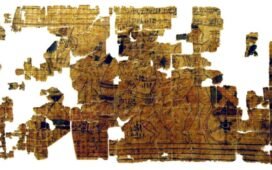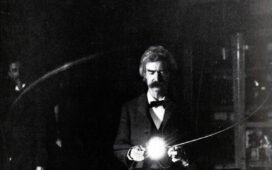“May you live in interesting times,” goes the apocryphal but nevertheless much-invoked “Chinese curse.” Egon Schiele, born in the Austria-Hungary of 1890, certainly did live in interesting times, and his work, as featured in the new Great Art Explained video above, can look like the creations of a cursed man. That’s especially true of those of his many self-portraits that, as host James Payne puts it, render his own body “more emaciated than it actually was, radically distorted and twisted, sometimes faceless or limbless, sometimes in abject terror.” Here Schiele worked at “an intersection of suffering and sex, as if he is disgusted by his own body.”
Such a preoccupation, as Payne suggests, may not seem completely unreasonable in a man who witnessed his own father’s death from syphilis — caught from a prostitute, on the night of his wedding to Schiele’s mother — when he was still in adolescence.
But what tends to occupy most discussions of Schiele’s art is less his familial or psychological background than his line: the “thin line between beauty and suffering” that clearly obsessed him, yes, but also the line created by the hand with which he drew and painted. His art remains immediately recognizable today because “his line has a particular rhythm: angular, tense, and economically placed. It’s not just a means of describing form; it’s a voice.”
In this voice, Schiele composed not likenesses but “psychological portraits, a search for the self or the ego, a preoccupation of the time.” The figure of Sigmund Freud loomed large over fin-de-siècle Vienna, of course, and into the twentieth century, the city and its civilization were “caught between the old imperial order and modern democratic movements.” A “laboratory for psychoanalysis, radical art, music, and taboo-breaking literature,” Vienna had also given rise to the career of Schiele’s mentor Gustav Klimt. By the time Schiele hit his stride, he could express in his work “not just personal discomfort, but the sickness and fragility of an entire society” — before he fell victim to the Spanish flu pandemic of 1918 at just 28 years old, along with his wife and unborn child. In a sense, he was unlucky to live when and where he did. But as his art also reminds us, we don’t merely inhabit our time and place; we’re created by them.
Related Content:
Based in Seoul, Colin Marshall writes and broadcasts on cities, language, and culture. His projects include the Substack newsletter Books on Cities and the book The Stateless City: a Walk through 21st-Century Los Angeles. Follow him on the social network formerly known as Twitter at @colinmarshall.















